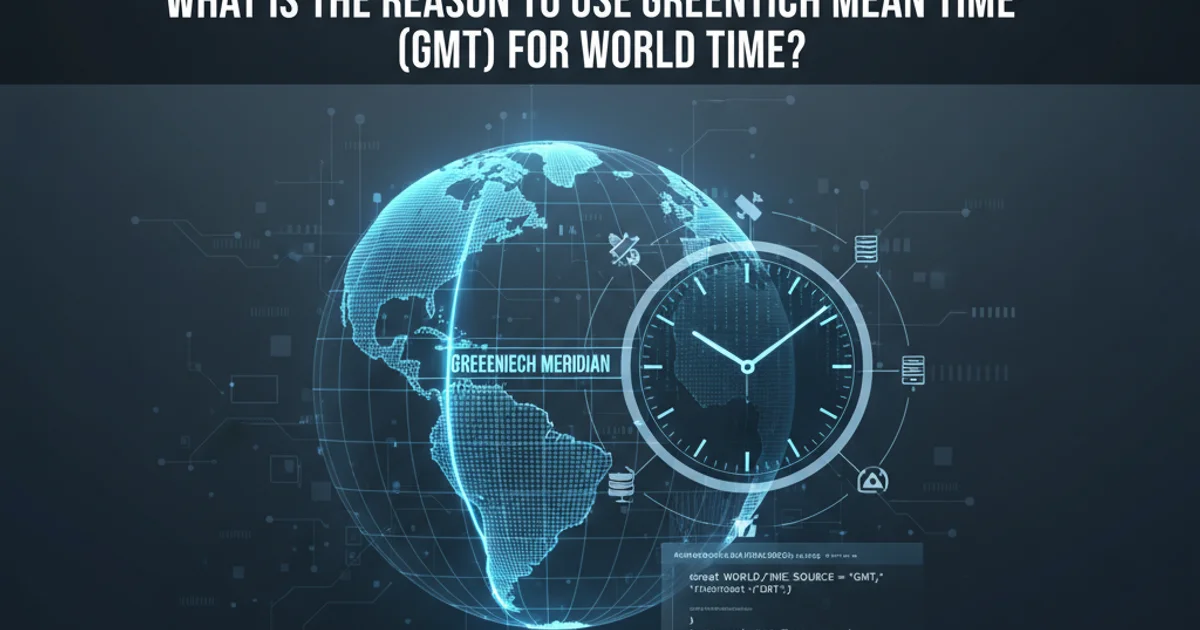What is the reason to use Greenwich mean time (GMT) for world time
Categories:
Why Greenwich Mean Time (GMT) is Crucial for World Time

Explore the historical significance and practical reasons behind using Greenwich Mean Time (GMT) as a foundational reference for global timekeeping, and its relationship with Coordinated Universal Time (UTC).
In a world that operates across diverse geographical locations, a standardized approach to timekeeping is not just convenient, but essential. Greenwich Mean Time (GMT) has historically served as this crucial reference point, providing a universal baseline for coordinating activities across different time zones. While often used interchangeably with Coordinated Universal Time (UTC), understanding GMT's origins and its role in global synchronization is key to appreciating modern timekeeping.
The Historical Significance of the Greenwich Meridian
The concept of GMT originated from the Royal Observatory in Greenwich, London. In the 19th century, as global trade and communication, particularly by sea, expanded rapidly, the need for a common prime meridian for navigation became paramount. The Greenwich Meridian was adopted as the international standard at the International Meridian Conference in Washington D.C. in 1884. This decision was largely influenced by the fact that two-thirds of all ships at the time already used Greenwich as their prime meridian.
flowchart TD
A[Global Trade & Navigation Expansion] --> B{Need for Common Prime Meridian}
B --> C[Royal Observatory Greenwich]
C --> D["International Meridian Conference (1884)"]
D --> E["Greenwich Meridian Adopted as Prime Meridian (0° Longitude)"]
E --> F[Establishment of GMT as Time Reference]
F --> G[Global Time Synchronization]The historical progression leading to GMT's adoption.
GMT as a Timekeeping Standard
Once the Greenwich Meridian was established as the prime meridian, it naturally became the reference point for time. GMT was defined as the mean solar time at the Royal Observatory. This meant that when it was noon GMT, the sun was at its highest point directly above the Greenwich Meridian. All other time zones were then expressed as offsets from GMT (e.g., GMT+1, GMT-5). This system provided a clear, unambiguous way to calculate local times anywhere in the world, facilitating everything from railway schedules to international diplomacy.
GMT vs. UTC: Understanding the Distinction
While often used interchangeably, there's a subtle but important distinction between GMT and UTC. GMT is an astronomical time standard, based on the Earth's rotation relative to the sun. UTC, on the other hand, is an atomic time standard, maintained by highly precise atomic clocks around the world. UTC is kept within 0.9 seconds of GMT by the introduction of 'leap seconds' when necessary. For everyday use, the difference is negligible, but for scientific and highly precise applications, UTC is the definitive standard. Many operating systems and programming languages internally use UTC and convert to local time zones for display.
graph LR
A["Earth's Rotation"] --> B["Astronomical Time (GMT)"]
C["Atomic Clocks"] --> D["Atomic Time (UTC)"]
B -- "Historically used as reference" --> E["Global Time Coordination"]
D -- "Modern, precise reference" --> E
D -- "Kept within 0.9s of" --> B
E -- "Facilitates" --> F["International Communication"]
E -- "Facilitates" --> G["Software Synchronization"]Relationship between GMT, UTC, and global time coordination.
const now = new Date();
// Get current time in UTC (often displayed as GMT+0)
const utcString = now.toUTCString();
console.log(`Current UTC/GMT time: ${utcString}`);
// Get local time string
const localString = now.toLocaleString();
console.log(`Current local time: ${localString}`);
// Get UTC milliseconds since epoch
const utcMilliseconds = now.getTime();
console.log(`UTC milliseconds since epoch: ${utcMilliseconds}`);
Demonstrating how to get UTC/GMT time in JavaScript.